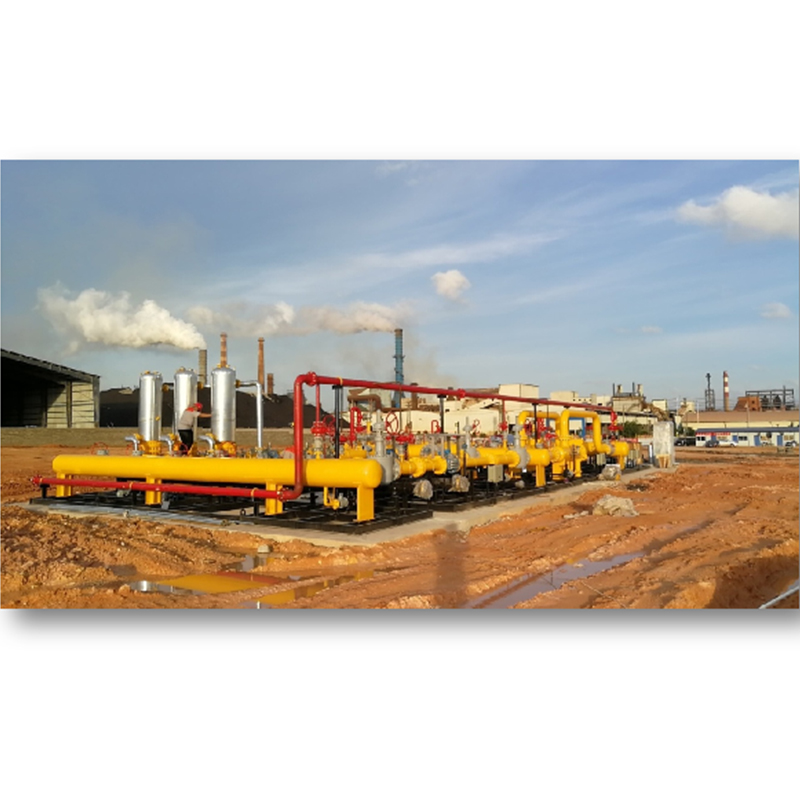
Dec . 06, 2024 18:36
Back to list
gas regulator
Understanding Gas Regulators An Essential Component for Safe and Efficient Gas Use
Gas regulators play a crucial role in various industries and household applications, ensuring the safe and efficient use of gas by maintaining a consistent pressure. Whether for heating, cooking, or powering machinery, the need for effective pressure regulation is paramount. This article will delve into what gas regulators are, how they function, their types, applications, and considerations for selection and maintenance.
What is a Gas Regulator?
A gas regulator is a device designed to control the pressure of gas coming from a supply line, reducing high-pressure gas to a lower, usable pressure. It ensures that the gas delivered to appliances or equipment operates within a specified pressure range, thus promoting safe and efficient performance. Without regulators, high-pressure gas could lead to equipment damage, inefficient operation, or hazardous situations.
How Does a Gas Regulator Work?
Gas regulators operate on a simple principle. When high-pressure gas enters the regulator, it passes through a valve that reduces the pressure to a predetermined level. The design of a typical gas regulator includes a diaphragm that responds to pressure changes. As gas flows through the regulator, the diaphragm moves to maintain consistent output pressure. If the downstream pressure drops, the diaphragm opens the valve to allow more gas in, and if the pressure rises, the diaphragm closes the valve to restrict gas flow.
The key components of a gas regulator include
1. Inlet Connection Where the high-pressure gas enters. 2. Diaphragm A responsive element that detects changes in pressure. 3. Outlet Connection Where the regulated gas exits to appliances. 4. Adjustment Screw Allows for fine-tuning of the output pressure.
Types of Gas Regulators
Gas regulators can be classified based on their functionality, design, and the type of gas they handle
. Some common types include1. Single-Stage Regulators These are used where the inlet pressure is relatively constant and provide a straightforward reduction in pressure. They are typically used in smaller applications.
2. Two-Stage Regulators Ideal for varying inlet pressures, they offer more stability and efficiency. By using two regulators in series, they help maintain a consistent output pressure regardless of fluctuations in the input.
3. Automatic Regulators These regulators automatically adjust to deliver consistent pressure under varying conditions, making them suitable for complex systems.
4. Pressure Relief Regulators These devices include safety features that prevent overpressure conditions, making them essential for high-stakes environments.
gas regulator

Applications of Gas Regulators
Gas regulators are employed in numerous applications including
- Residential Use Regulating gas for home heating, cooking, and hot water systems. - Industrial Applications Ensuring safe operation of equipment used in manufacturing processes, welding, and metal cutting. - Commercial Use Powers restaurants, hotels, and other businesses that rely on gas for cooking and heating. - Gas Distribution Systems Managing the pressure of natural gas or propane in municipal supply lines.
Selecting a Gas Regulator
Choosing the right gas regulator involves several considerations
1. Type of Fuel Different gases (natural gas, propane, butane) require different regulators designed specifically for their properties.
2. Required Pressure Levels Understand the pressure range needed for the application to ensure efficient operation.
3. Flow Rate Calculate the necessary flow rate as it impacts the size and type of regulator required.
4. Installation Location Consider environmental factors such as temperature, humidity, and proximity to other devices.
Maintenance and Safety Considerations
Regular maintenance of gas regulators is essential for safety and efficiency. Users should inspect regulators for leaks, wear, or damage. Periodic testing and calibration ensure that the regulator maintains the correct pressure levels. Additionally, it's vital to ensure that any installation adheres to local codes and regulations, as improper use can lead to serious safety hazards.
Conclusion
Gas regulators are an indispensable part of any gas-utilizing system, providing safety and efficiency. With a clear understanding of their functioning, types, and applications, users can make informed choices regarding the regulation of gas. Regular maintenance and adherence to safety standards will promote a hazard-free and efficient operation, ensuring that both household and industrial applications run smoothly.
Next:
Latest news
-
Safety Valve Spring-Loaded Design Overpressure ProtectionNewsJul.25,2025
-
Precision Voltage Regulator AC5 Accuracy Grade PerformanceNewsJul.25,2025
-
Natural Gas Pressure Regulating Skid Industrial Pipeline ApplicationsNewsJul.25,2025
-
Natural Gas Filter Stainless Steel Mesh Element DesignNewsJul.25,2025
-
Gas Pressure Regulator Valve Direct-Acting Spring-Loaded DesignNewsJul.25,2025
-
Decompression Equipment Multi-Stage Heat Exchange System DesignNewsJul.25,2025

